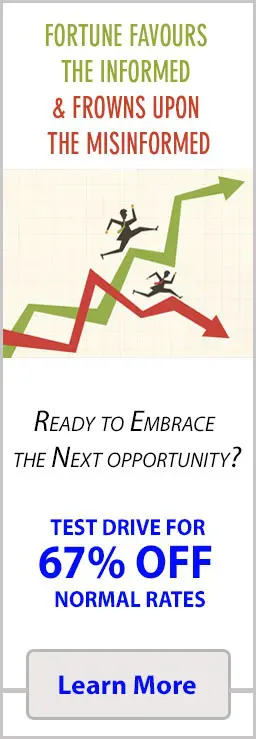
The Fear Gauge: When Market Terror Becomes Measurable
Jul 10, 2025
The Fear Gauge is spiking again. The VIX rockets from 15 to 35 in a matter of hours as headlines scream crisis and portfolios bleed red. Traders who were bragging about their AI stock gains last week are now panic-selling everything that isn’t nailed down. The same psychological forces that create bubbles are now creating crashes, and the volatility index captures this collective madness in real time.
How does the volatility index (VIX) reflect investor fear and herd behavior? It’s not just measuring market volatility—it’s measuring the psychological breakdown of rational decision-making as individual investors become part of a panicked herd. When the VIX spikes above 30, you’re witnessing thousands of investors simultaneously abandoning their investment plans, their risk tolerance, and their long-term thinking in favor of immediate emotional relief.
The VIX doesn’t predict market crashes; it measures the psychological conditions that create them. High VIX readings reveal when fear has overwhelmed greed, when loss aversion has paralyzed rational analysis, and when herd behavior has replaced independent thinking. These are precisely the moments when contrarian investors make their fortunes, buying assets from panicked sellers who have confused temporary volatility with permanent value destruction.
Understanding the VIX as a psychological indicator rather than a market predictor reveals why some of the best investment opportunities emerge when fear peaks and rational analysis becomes a contrarian position.
The Psychology Behind the Numbers
The VIX measures something more profound than statistical volatility: it captures the collective breakdown of investor psychology under stress. When markets decline and uncertainty increases, individual risk tolerance collapses in predictable patterns that show up as spikes in implied volatility.
This psychological mechanism operates through loss aversion, the cognitive bias that makes losses feel roughly twice as painful as equivalent gains feel good. As portfolios decline, this pain becomes overwhelming, triggering desperate attempts to avoid further losses that often guarantee them. Investors who were comfortable with market risk during bull markets suddenly find any risk intolerable during bear markets.
The VIX spike reflects this psychological transformation in real time. Options buyers pay increasingly irrational premiums for downside protection, not because the mathematical probability of further losses has increased dramatically, but because their psychological tolerance for those losses has collapsed completely. The higher the VIX, the more investors are willing to pay for the illusion of safety.
This creates a feedback loop where rising volatility increases fear, which increases demand for protection, which increases volatility further. The VIX becomes both a measure of fear and a driver of additional fear, creating self-reinforcing cycles that often persist longer than fundamental conditions would justify.
Herd Behavior in Liquid Form
VIX spikes reveal herd behavior at its most dangerous: the moment when independent decision-making breaks down and everyone starts moving in the same direction simultaneously. This isn’t gradual consensus building; it’s psychological contagion spreading through markets at the speed of electronic trading.
The mechanism is predictable and brutal. A few large investors begin selling, creating price declines that trigger stop-losses and risk management systems. These forced sales create more declines, which trigger more selling, which creates the cascading liquidation that shows up as VIX explosions above 40 or 50.
Social media and algorithmic trading have accelerated this herding process beyond anything seen in previous market cycles. Fear spreads through trading floors and social networks simultaneously, creating coordinated panic that overwhelms rational analysis. The VIX captures this coordination failure in mathematical form, measuring the moment when markets stop being pricing mechanisms and become pure emotion.
The March 2020 COVID crash demonstrated this perfectly: the VIX hit 82 as investors fled everything that wasn’t cash, creating indiscriminate selling that had nothing to do with individual company fundamentals. The herd wasn’t making investment decisions; it was making survival decisions that happened to involve financial instruments.
The Contrarian’s Secret Weapon
High VIX readings aren’t warnings to flee; they’re invitations to profit from other people’s psychological breakdown. When the VIX spikes above 30, you’re witnessing systematic mispricing as emotional sellers dump assets to rational buyers at fire-sale prices.
The contrarian insight is counterintuitive: the higher the VIX, the safer it becomes to buy stocks, not because market risk has decreased, but because behavioral risk has peaked. When fear reaches maximum intensity, most of the selling pressure has been exhausted, creating conditions where any positive news can trigger violent rebounds.
This requires psychological fortitude that most investors lack. Buying when the VIX is screaming and headlines are predicting doom feels reckless, but it’s actually the mathematically optimal time to deploy capital. The mistake most investors make is treating high VIX as a warning signal rather than an opportunity signal.
Professional investors understand this dynamic and position accordingly. They use VIX spikes as buying opportunities, understanding that extreme fear creates temporary disconnections between price and value that correct when psychological pressure subsides. The higher the VIX, the more attractive risk assets become from a contrarian perspective.
The Complacency Trap of Low VIX
Extended periods of low VIX readings—the famous “VIX below 15” phenomenon—create different but equally dangerous psychological conditions. When volatility stays suppressed for months, investors begin treating risk as if it doesn’t exist, leading to systematic underpricing of uncertainty and overconfidence in continued stability.
Low VIX periods breed complacency that shows up in multiple ways: increased use of leverage, reduced hedging, concentration in popular sectors, and assumption that current trends will continue indefinitely. Investors who lived through previous volatility spikes begin treating current calm as permanent rather than cyclical.
This complacency creates the conditions for future VIX explosions. As risk tolerance increases and defensive positioning decreases, markets become increasingly vulnerable to shocks that would have been manageable during more cautious periods. The longer the VIX stays suppressed, the more violent the eventual spike becomes.
The 2017-2018 cycle demonstrated this perfectly: the VIX spent most of 2017 below 12, creating unprecedented complacency that led to massive short-volatility positions. When volatility finally returned in February 2018, these positions created forced buying that drove the VIX above 50 in a matter of days, destroying billions in capital that had bet against fear returning.
The AI Volatility Paradox
Artificial intelligence and algorithmic trading have created new patterns in VIX behavior that reflect the mechanization of fear responses. High-frequency algorithms now respond to volatility signals faster than human psychology can process them, creating VIX spikes that are more sudden and more extreme than historical patterns would suggest.
This algorithmic amplification creates a paradox: while AI was supposed to make markets more efficient, it has actually made them more volatile during stress periods. Algorithms designed to manage risk often end up amplifying risk when they all respond to the same signals simultaneously, creating feedback loops that push the VIX to levels that pure human psychology might not achieve.
The result is VIX behavior that combines human fear with machine speed, creating volatility spikes that are both more intense and more short-lived than previous cycles. This creates opportunities for investors who understand that algorithmic VIX spikes often reverse more quickly than psychologically-driven spikes, but it also creates risks for those who assume historical VIX patterns will continue unchanged.
Understanding this new dynamic is crucial for using the VIX as a contrarian indicator. Algorithmic VIX spikes may signal tactical opportunities rather than strategic buying points, requiring more sophisticated timing than simple “buy when VIX is high” strategies.
The Options Market Psychology Laboratory
The VIX is calculated from options prices, making it a direct measurement of how much investors are willing to pay for insurance against losses. This creates a real-time laboratory for studying fear-based decision-making under financial stress.
When fear peaks, investors pay irrational premiums for put options that provide downside protection, often spending more on insurance than the maximum possible payout would justify. This reveals the psychological value of certainty during uncertain times: investors will overpay dramatically for the feeling of protection, even when that protection is mathematically overpriced.
This options market psychology creates systematic opportunities for contrarian investors who can sell protection when fear peaks and buy protection when complacency peaks. The VIX essentially measures the mispricing of insurance, indicating when fear has made protection too expensive and when complacency has made it too cheap.
The key insight is that the VIX measures emotional rather than mathematical risk assessment. High VIX readings indicate when emotions have overwhelmed analysis, creating temporary disconnections between insurance prices and actual risk levels that correct when psychological pressure subsides.
The Memory Bias of Volatility Clustering
VIX behavior exhibits clustering patterns that reflect how investor psychology responds to recent experience. Periods of high volatility tend to be followed by more high volatility, not because fundamental conditions remain unchanged, but because recent fear experiences make investors hypersensitive to new potential threats.
This clustering reflects availability bias, the cognitive error that makes recent, dramatic events feel more probable than they actually are. Investors who just lived through a VIX spike above 40 remain on edge for months, treating normal market fluctuations as signs of impending crisis. This heightened sensitivity keeps the VIX elevated longer than economic conditions would justify.
Conversely, extended periods of low volatility create memory bias in the opposite direction. Investors begin treating calm markets as the new normal, systematically underestimating the probability of future volatility. This creates the complacency that enables future VIX explosions when volatility inevitably returns.
Understanding these memory biases is crucial for interpreting VIX signals. High VIX readings during volatile periods may represent overshooting driven by recent experience rather than accurate assessment of current risks. Low VIX readings during calm periods may represent undershooting driven by recency bias rather than accurate risk measurement.
The Retirement Planning Volatility Trap
VIX spikes create particularly dangerous psychological conditions for retirement planning because they make long-term investors think like short-term traders. When the Fear Gauge explodes, even disciplined savers abandon their systematic contribution strategies and well-planned asset allocations in favor of emotional decisions that feel protective but prove destructive.
The mechanism is predictable: high VIX periods make investors reduce equity allocations precisely when stocks are cheapest and increase cash allocations precisely when cash provides no real protection against long-term inflation. The psychological relief of “playing it safe” comes at enormous opportunity cost that compounds over retirement time horizons.
This creates systematic buy-high, sell-low behavior among retirement investors who should be doing the opposite. VIX spikes should signal increased systematic investment rather than decreased investment, but fear makes this mathematically optimal behavior feel psychologically impossible.
The most successful retirement investors treat VIX spikes as buying opportunities rather than selling signals. They understand that volatility is temporary but compound interest is permanent, making systematic investment during high-VIX periods one of the most effective wealth-building strategies available.
Breaking Free from Fear-Based Investing
Using the VIX effectively requires inverting your natural psychological responses to fear and complacency. When the Fear Gauge spikes and every instinct screams “sell,” that’s precisely when rational analysis suggests buying. When the VIX stays suppressed and everyone feels safe, that’s when increased caution becomes appropriate.
This inversion requires systematic rules that operate independently of emotional state. Successful VIX-aware investors often use mechanical signals: buy more when VIX exceeds 25, reduce risk when VIX stays below 12 for extended periods, increase systematic investment during VIX spikes above 30.
The key insight is treating the VIX as a sentiment indicator rather than a risk indicator. High VIX readings indicate when sentiment has become extremely pessimistic, creating opportunities for contrarian positioning. Low VIX readings indicate when sentiment has become extremely optimistic, suggesting increased caution is warranted.
This requires accepting that optimal investment behavior often feels psychologically uncomfortable. Buying during VIX spikes feels reckless even when it’s mathematically sound. Reducing risk during VIX suppression feels overly cautious even when it’s strategically wise.
The most successful investors understand that the VIX measures the breakdown of rational decision-making under stress. They position themselves to benefit from this breakdown rather than participate in it, using other people’s fear as a source of opportunity rather than a cause for panic.
Stop treating VIX spikes as warnings to flee. Start recognizing them as invitations to profit from systematic mispricing created by collective psychological breakdown. The Fear Gauge doesn’t predict disaster; it measures the conditions that create opportunity for those brave enough to act when others cannot.
The market rewards courage during periods of maximum fear and punishes complacency during periods of minimum concern. The VIX tells you which period you’re in. Choose accordingly.










